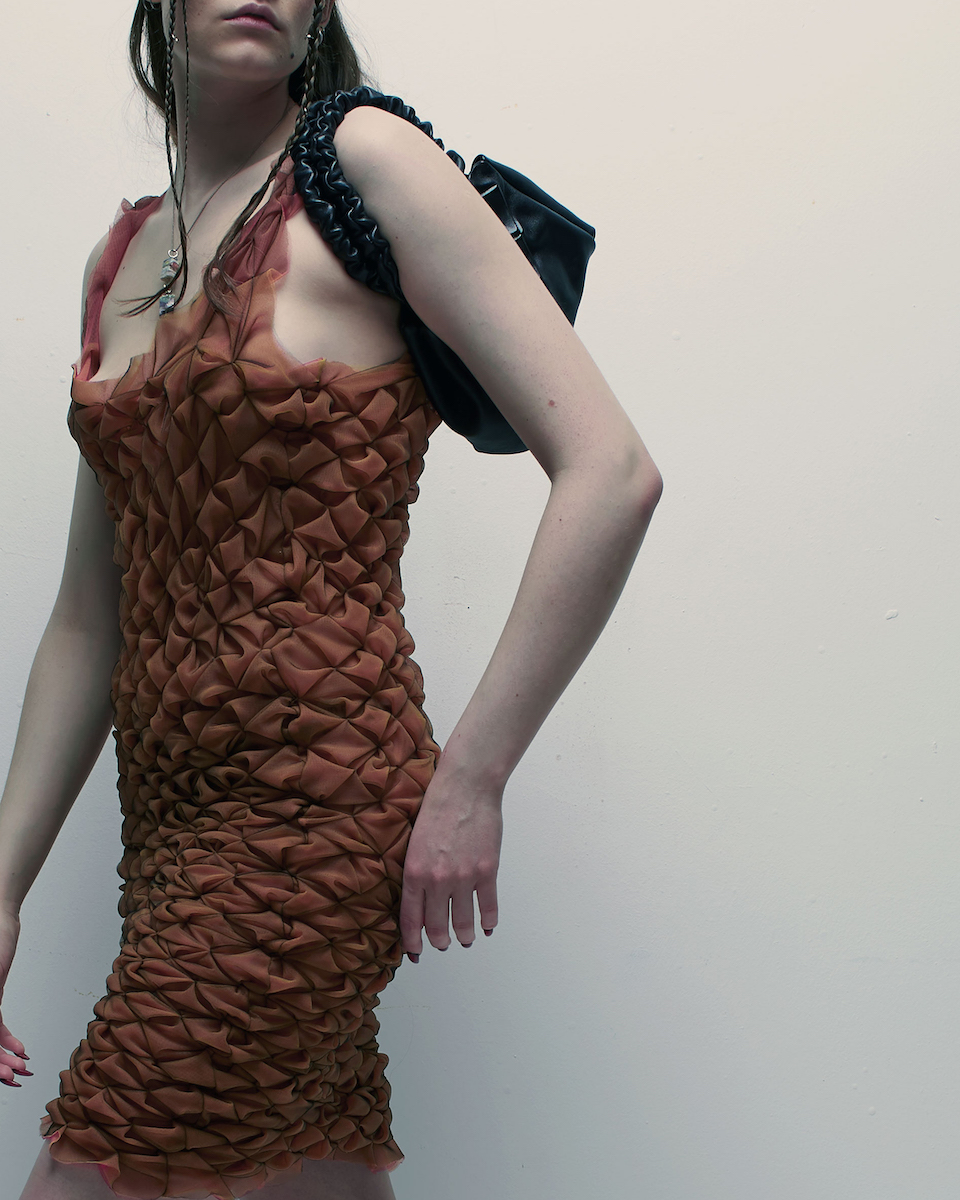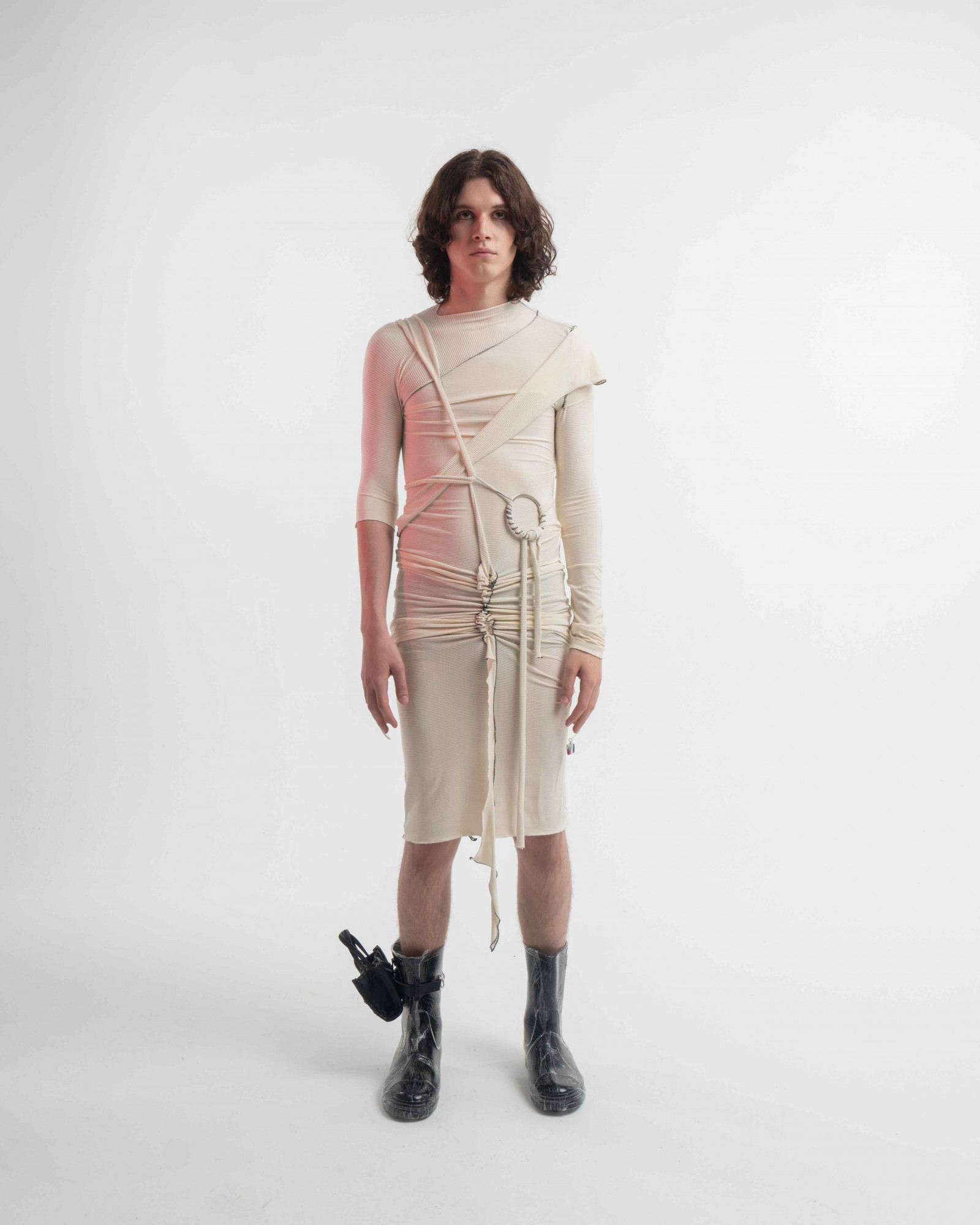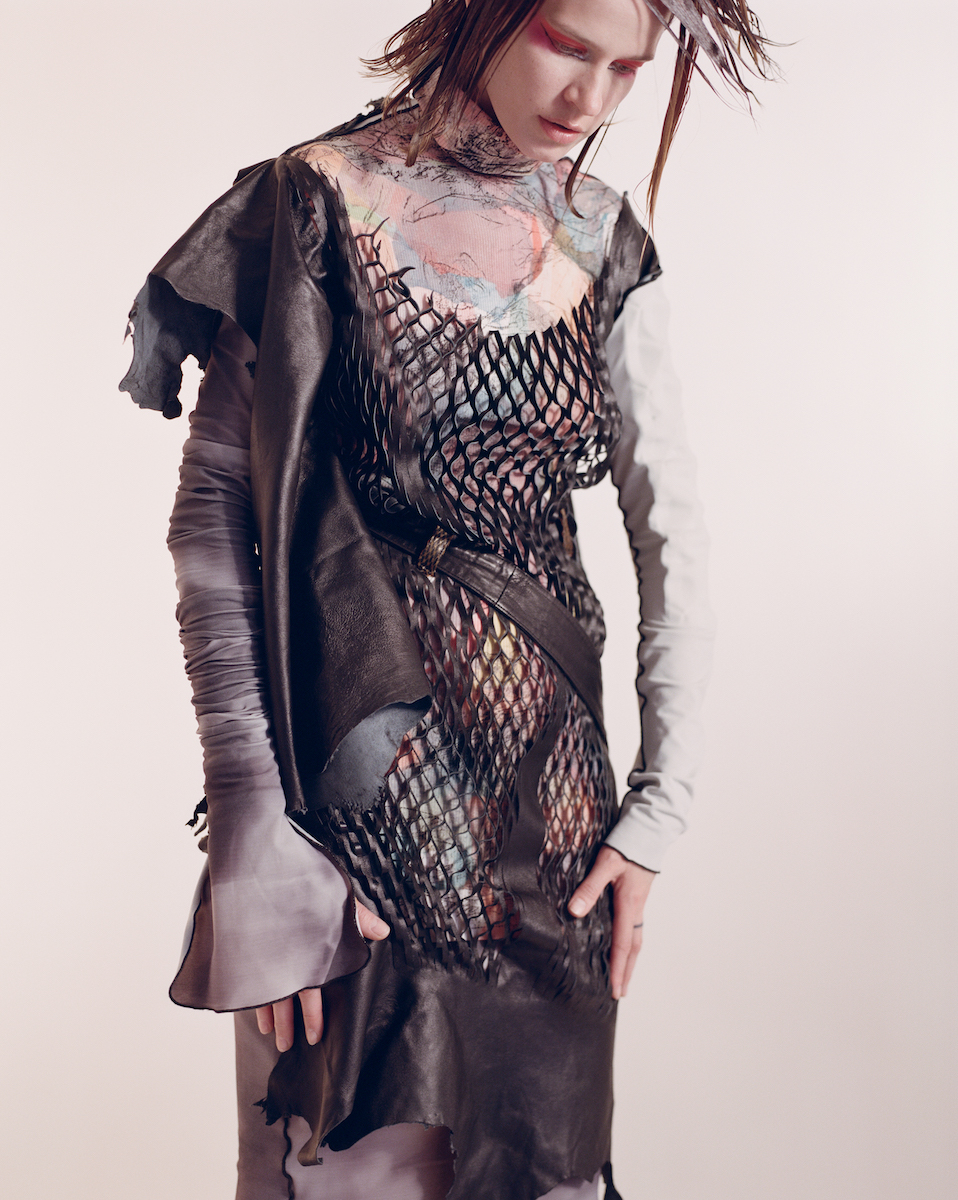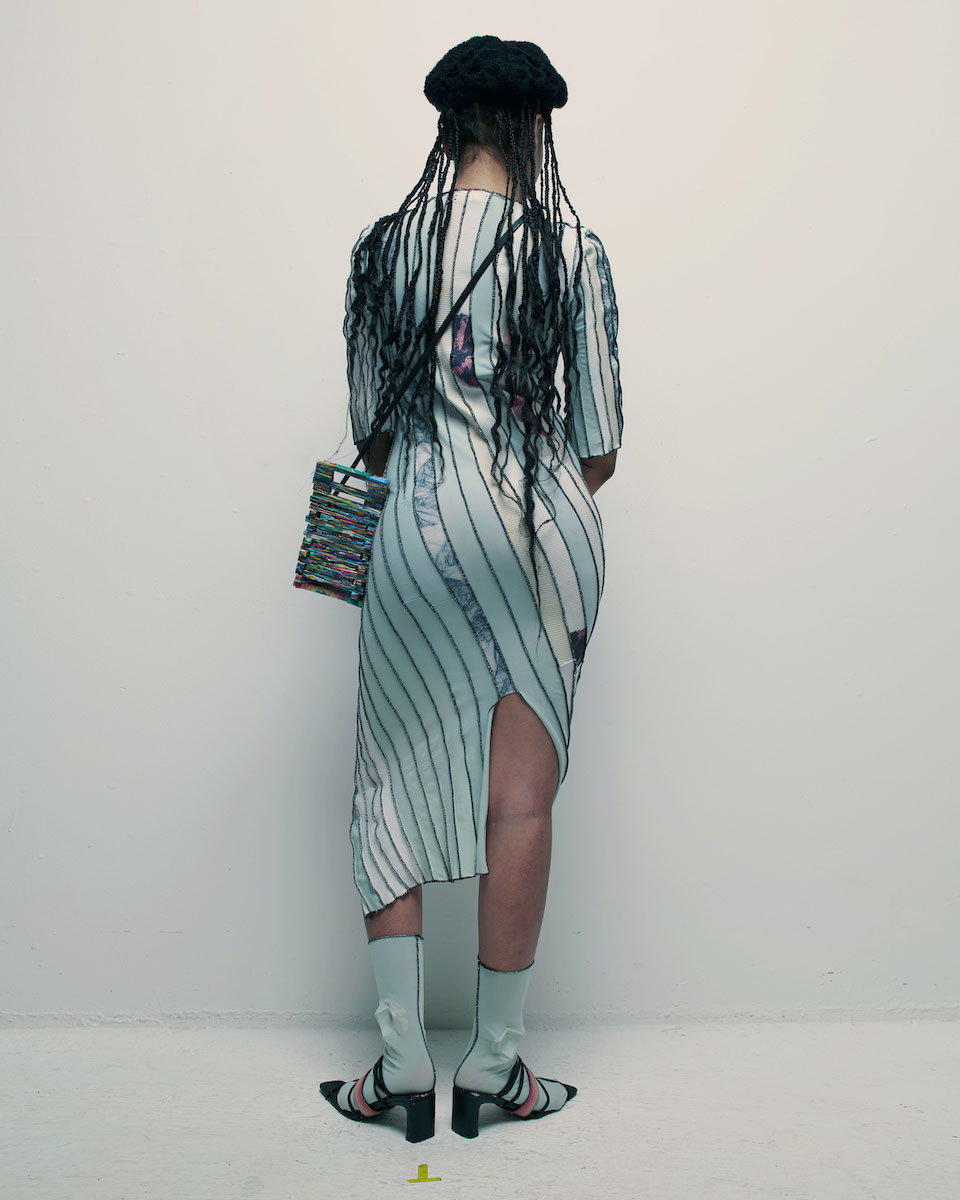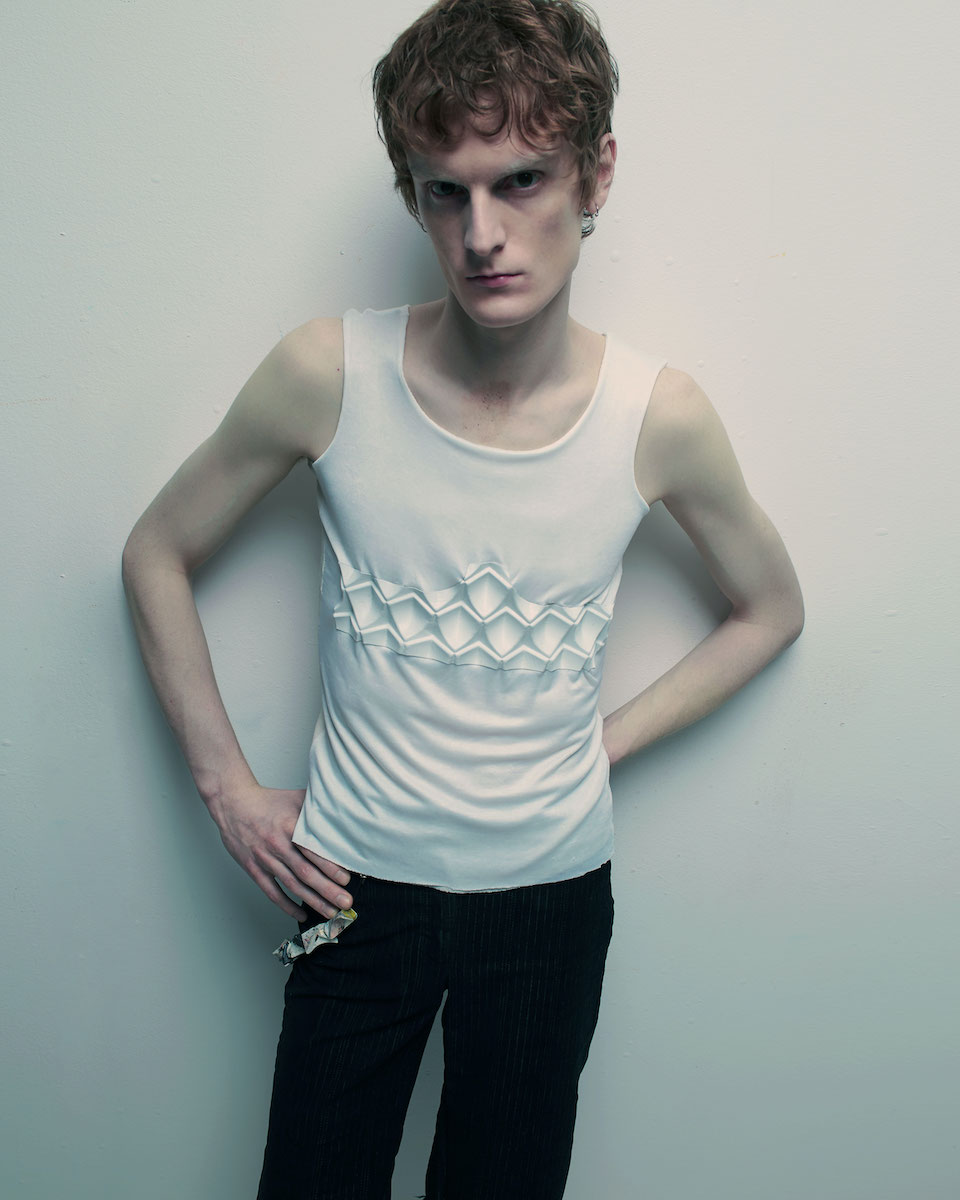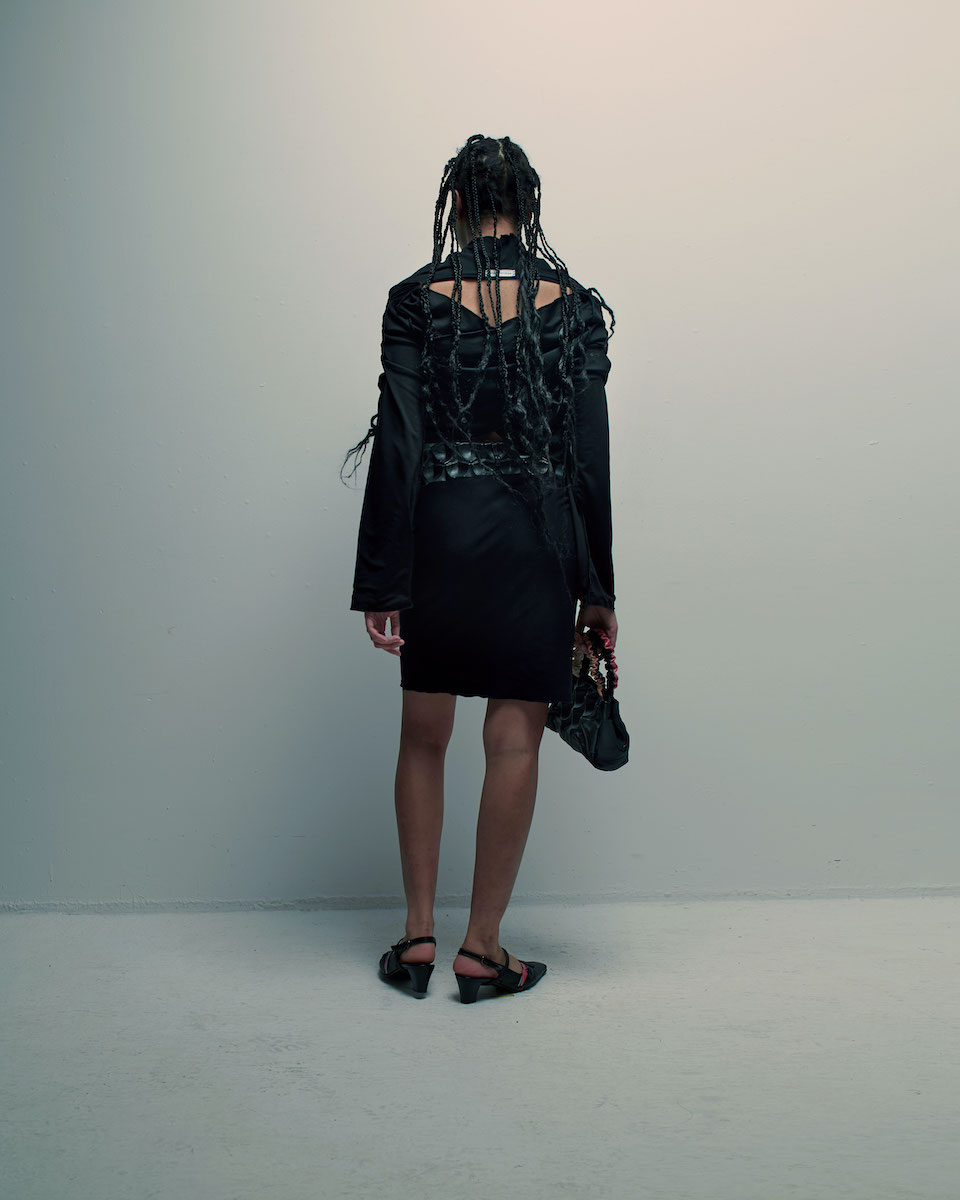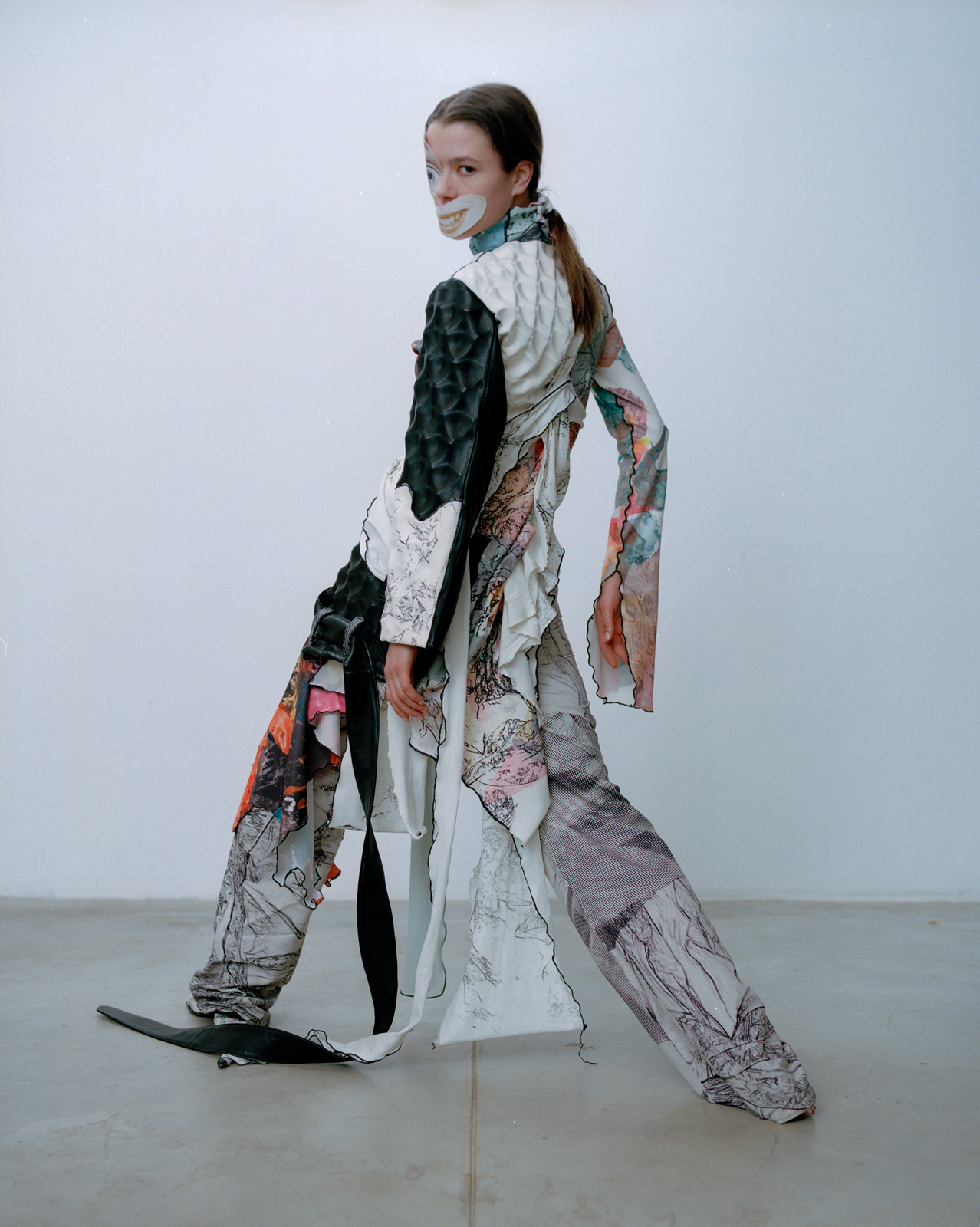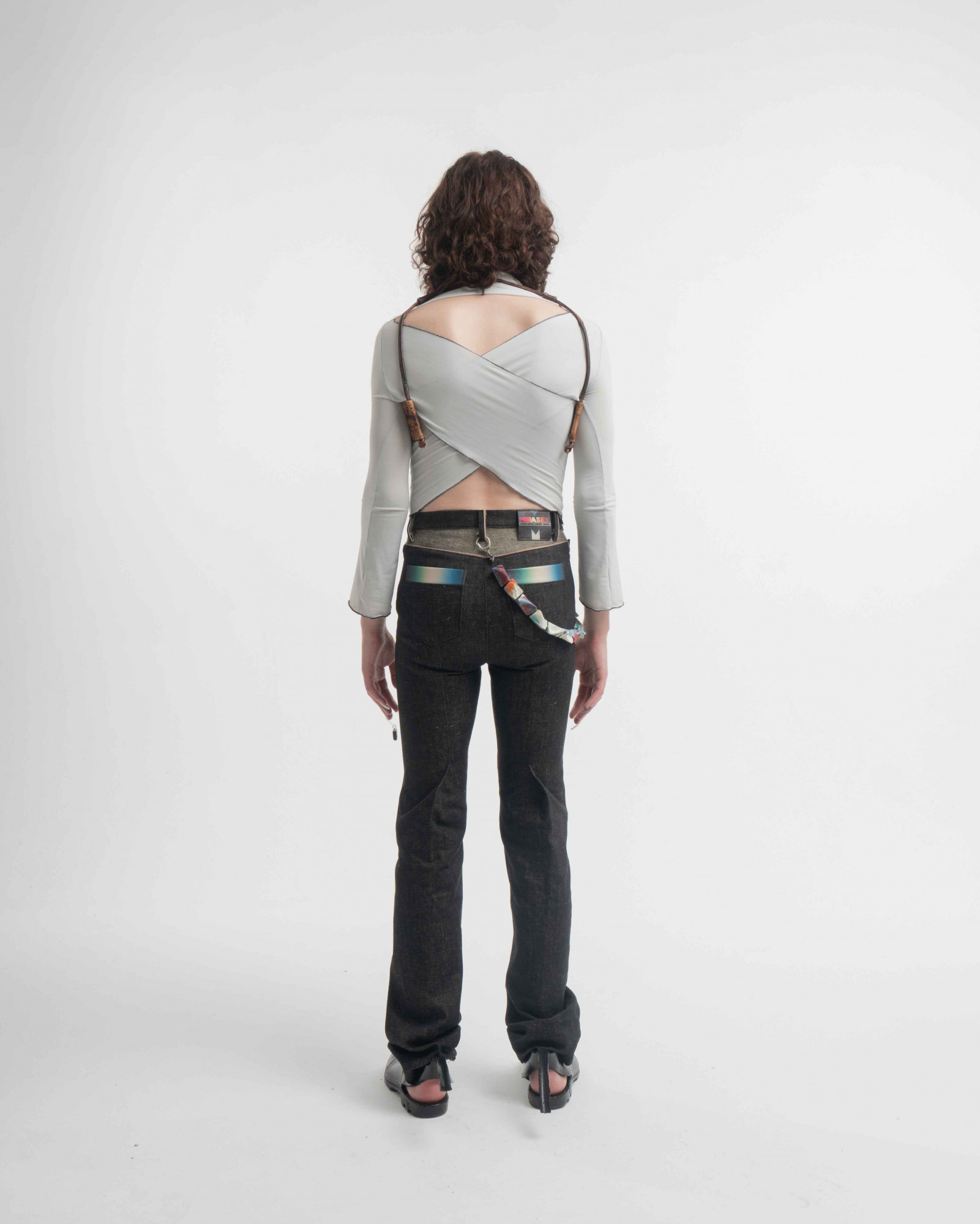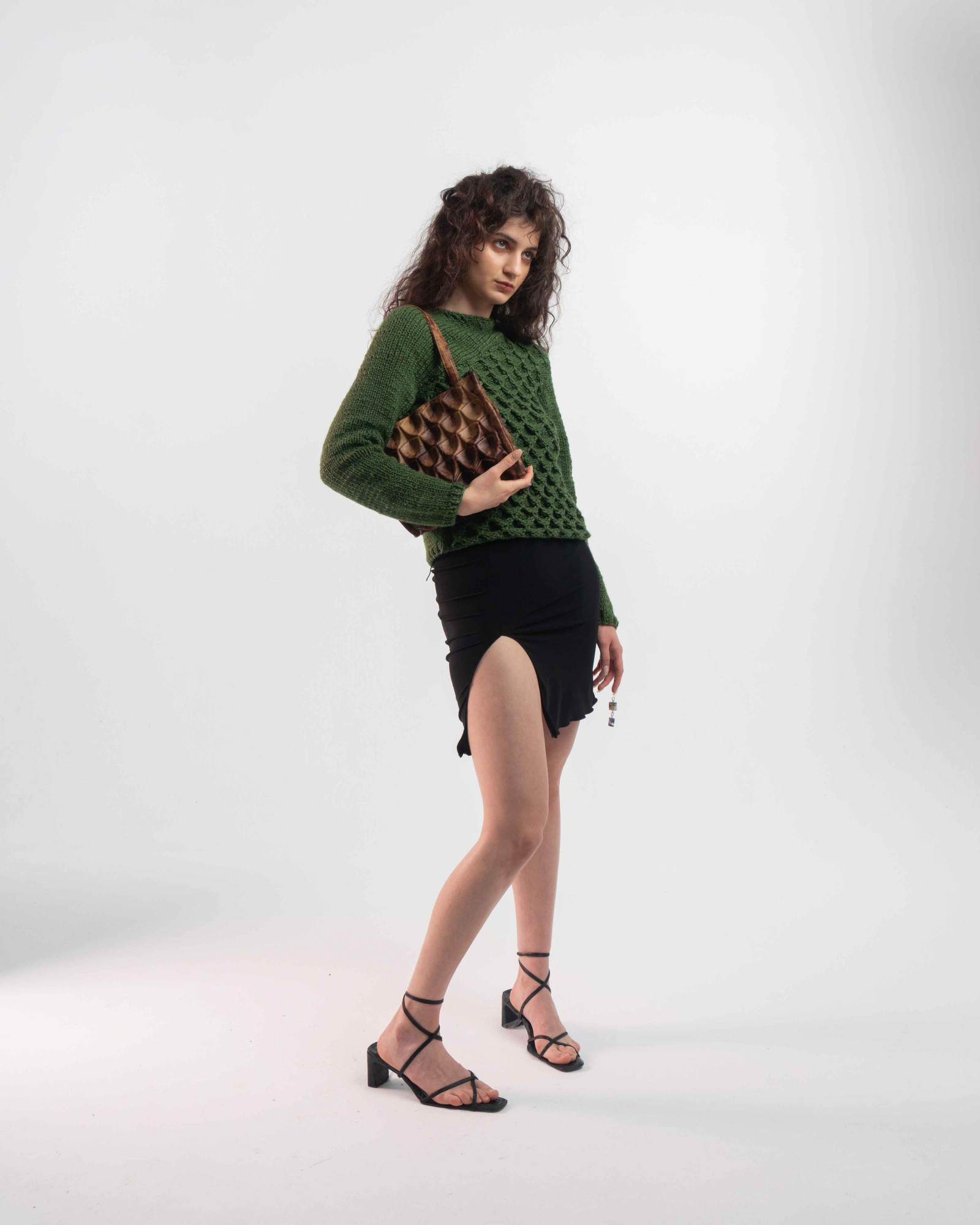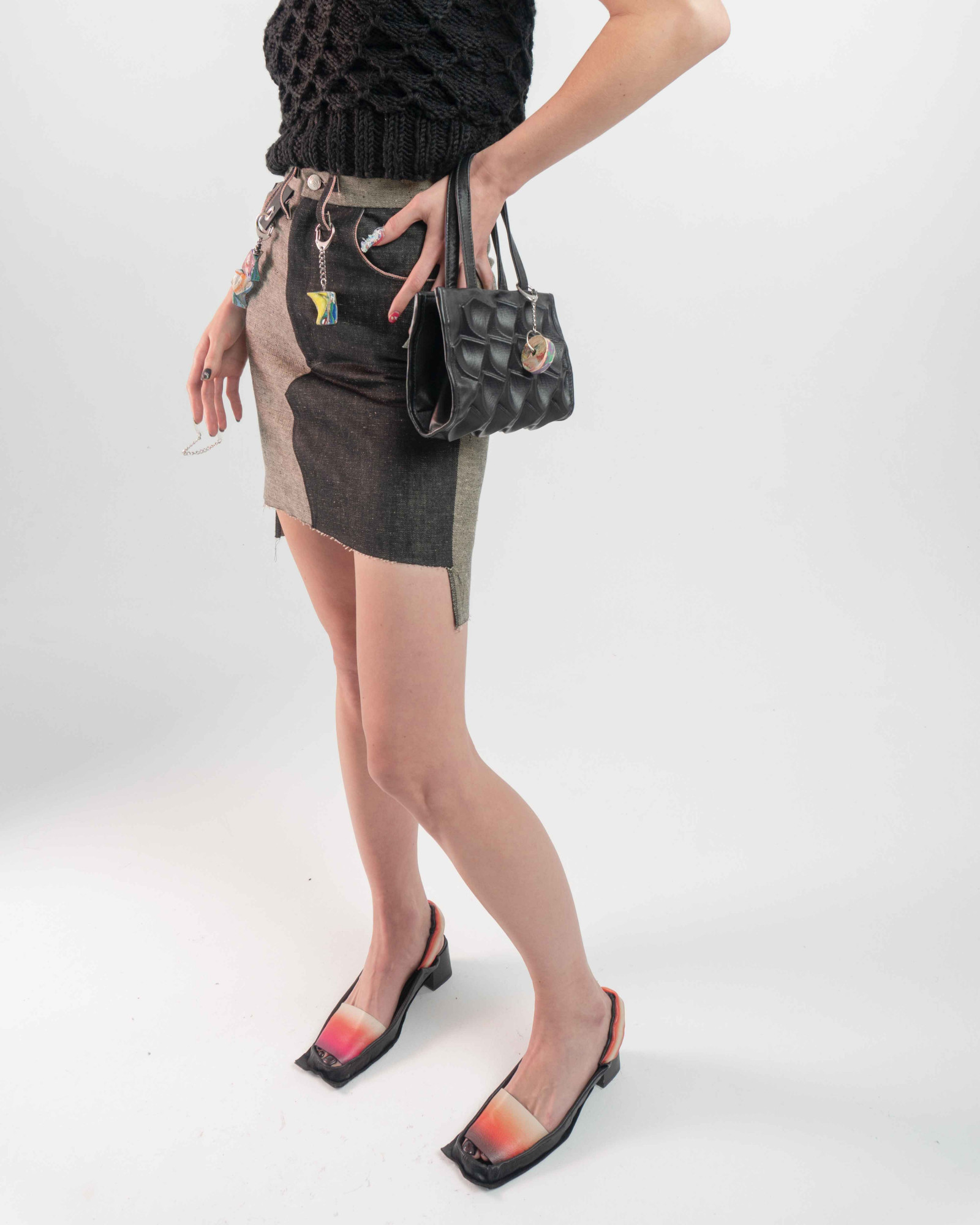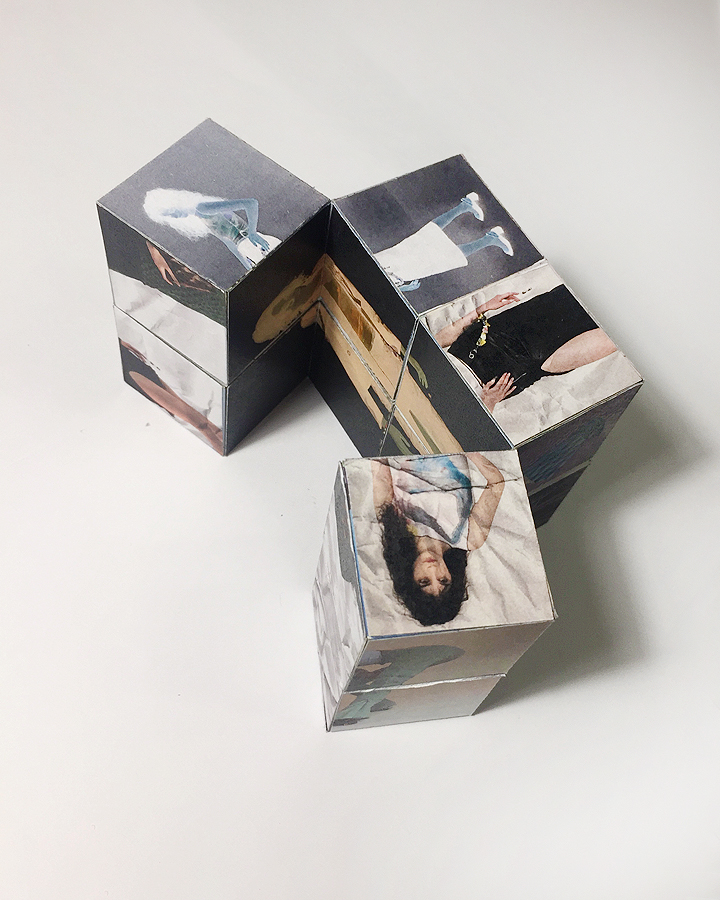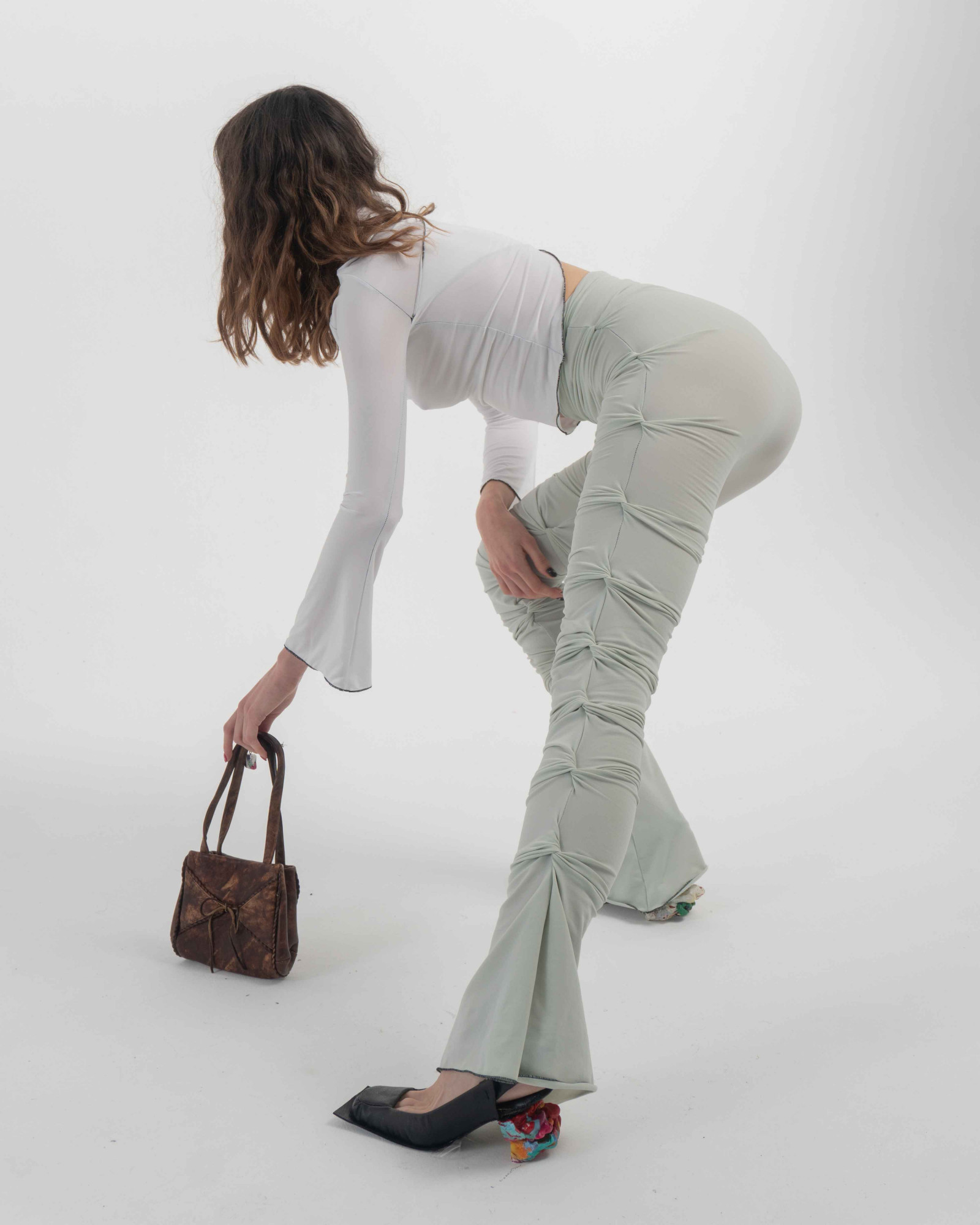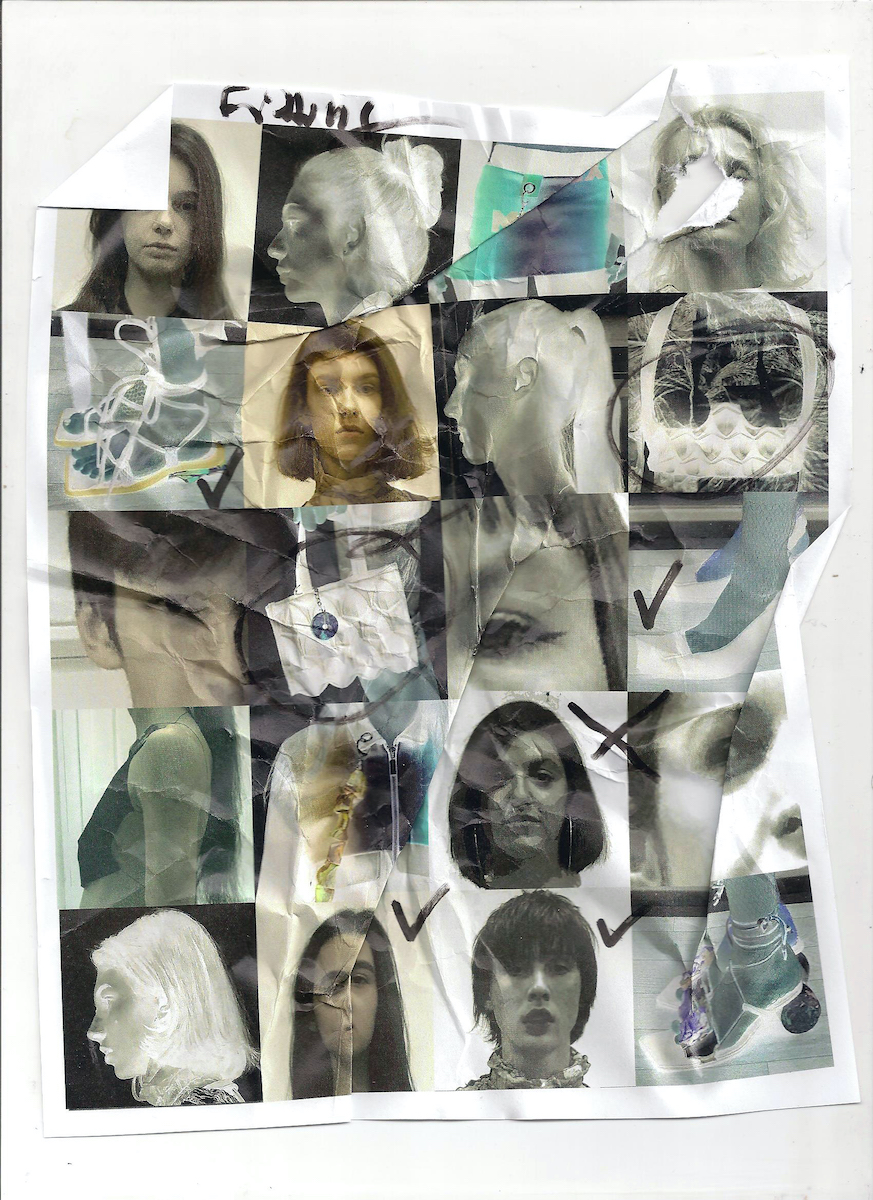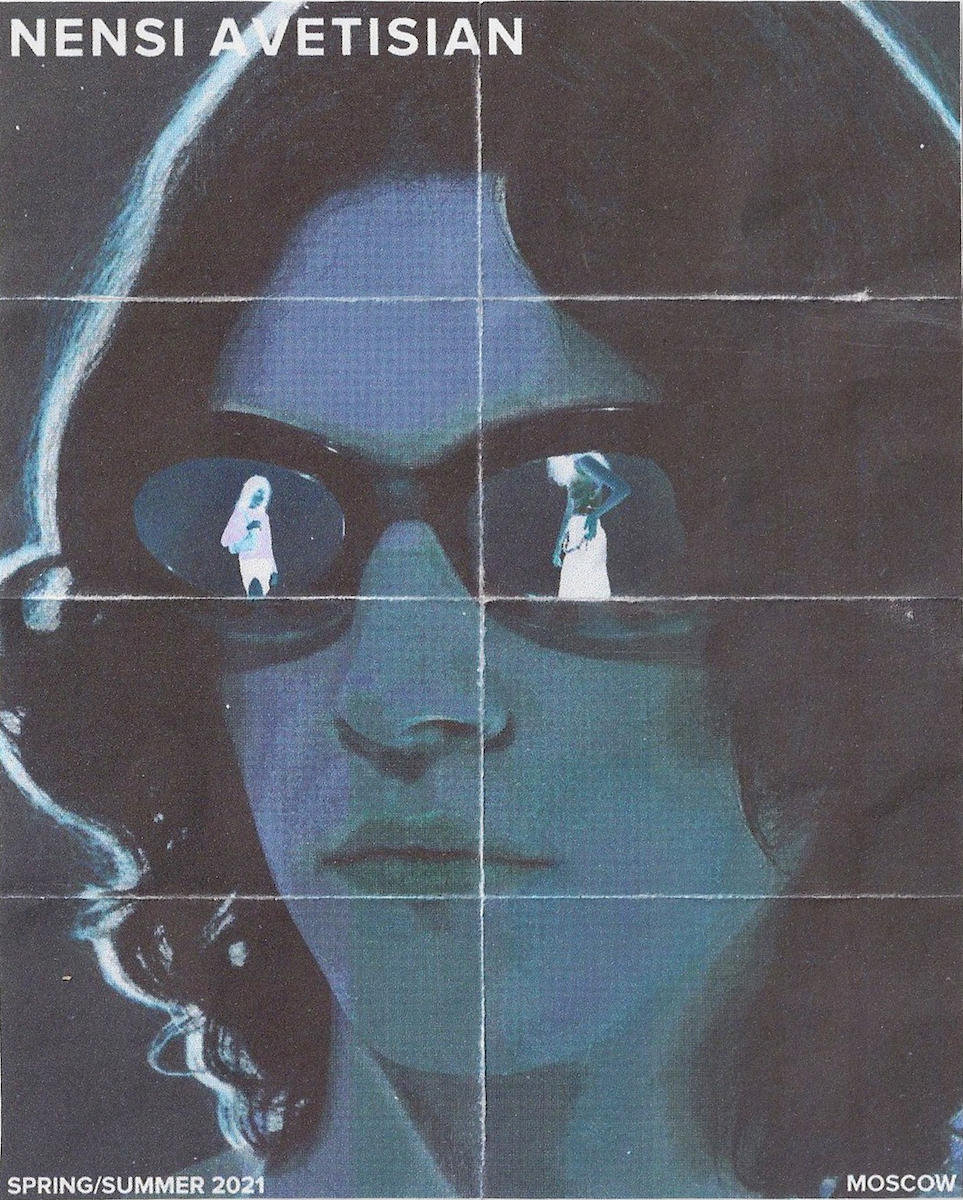Nensi Avetisian: the fashion brand fusing monumental spiritual architecture and sustainability
In our era of overproduction, it’s harder than ever for young designers to enter the fashion industry. Not only is it challenging to find a new approach to garments, but it’s even more difficult to find a reason to justify making yet more clothes in an already oversaturated commercial and environmental landscape. Moscow-based designer Nensi Avetisian not only offers beautiful wearable objects, but a fresh grassroots take on sustainability, with a dose of much needed critical reflection on fashion consumption.
Avetisian has a sharp eye for material culture, and at times her work borders on product design, or sculpture. We may live in an era where fashion is focused on telling stories — but our online environment, strengthened by rolling anti-pandemic lockdowns, means that designers are increasingly forced to rely on external elements to frame their clothes: atmospheric shoots, locations, sets, styling, sound, and video. Yet while some of these elements also appear in Avetisian’s work, her skill is in ensuring that garments remain a central focus. Stories are still told through new textures, subtle colours, and unusual fits; there’s an emphasis on how garments make you feel, and learning to transmit the tactility through visual means. This object-oriented approach is endlessly precious for independent designers who create experiences impossible to get from mass-produced clothes.
Avetisian’s designs quickly gained popularity, particularly her structural bag made from upcycled leather. The bag recreates the vaulting of a church ceiling in miniature, but “people compared it to egg carton, probably because I referenced packaging in previous work inspired by Du Pont Cellophane posters with children wrapped in plastic. So I made these videos using a bag as an egg carton,” the designer remembers. “It just happened naturally: I always try to create works upon which people will keep interpreting new meanings.” Avetisian’s signature designs have their roots in Armenian churches, inspired by their monumental spiritual architecture. Their soaring, ancient arches are recreated on corsets, jackets and bags, but from the most modern of materials — recycled plastic from disposable cups and bags.
“Armenian churches are very simple and minimalistic, with no decoration. They are about serenity, ancient history, and stillness. Plastics are fast, colourful, bright, loud, an easy way to make and buy things,” the designer explains. “The merging of those two aesthetics was the starting point of my graduate collection, which researches the absurdity and ambiguity of contemporary sustainable fashion”.
Avetisian first became interested in fashion in high school, and later studied at the British Higher School of Design. Her graduation coincided with the pandemic, leaving little chance of securing internships and work opportunities with larger labels. Eventually, it motivated her to start her own brand, a label she describes as “upcycled 80s, sometimes gloomy”. She admits that running an emerging brand in Russia is challenging due to logistical problems and a lack of institutional support — yet the small creative scene gives designers more chances to have their voice heard.
“I enjoy working with my hands while listening to music by Igor Stravinsky, Bill Evans, Philip Glass, David Bowie,” says Avetisian, while talking about her inspiration. “I love the aesthetics of Taxi Driver by Scorsese, and all the movie posters from the 1980s. They are kind of collage-style, as if the artwork is still in process but it looks fantastic”. Growing up in an Armenian family also had a large impact on her creativity, particularly the stories she heard from her grandmother. “I always reference Armenian music, painters, architecture in my work. The topics of emigration, search, and self-knowledge have always interested me.”
Among Avetisian’s future aims is collaborating with artisans in Russia and Armenia to promote local craftsmanship. More broadly, she is committed to a more mindful approach to fashion at all stages — what we wear, how we make, and how we consume garments. “Nearly all of the garments are made of fabrics from vintage clothes, stocks, and second hands. Last year, a video of the process of creating bags from second hand leather coats was showcased at SHOWstudio. We recycle plastic bags and bottle cups and use them in our accessories: shoes, bags, jewellery. Every few months, we organise a collection of plastics from our friends and clients.”
Most important, she says, is the will to use sustainability as a long-term strategy, rather than a buzzword. “For me, sustainability means honesty and openness. It means a dialogue between everything and everybody. It is not only about the materials used: it’s about people, working conditions, language, and communication,” she says. “That is what I am always thinking about when I create collections, draw sketches, work with producers, and communicate with clients: how to make each chain of creation and production more ethical.”
